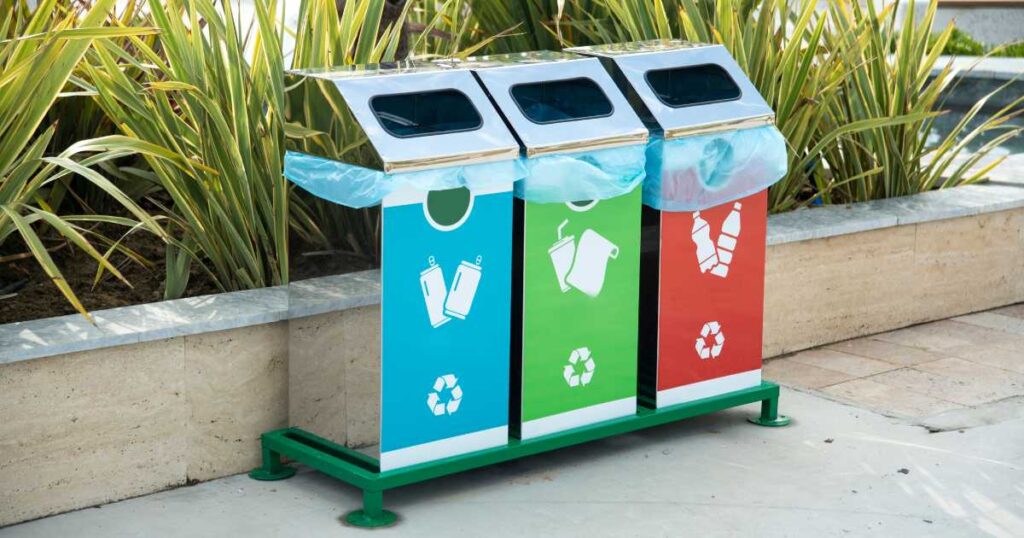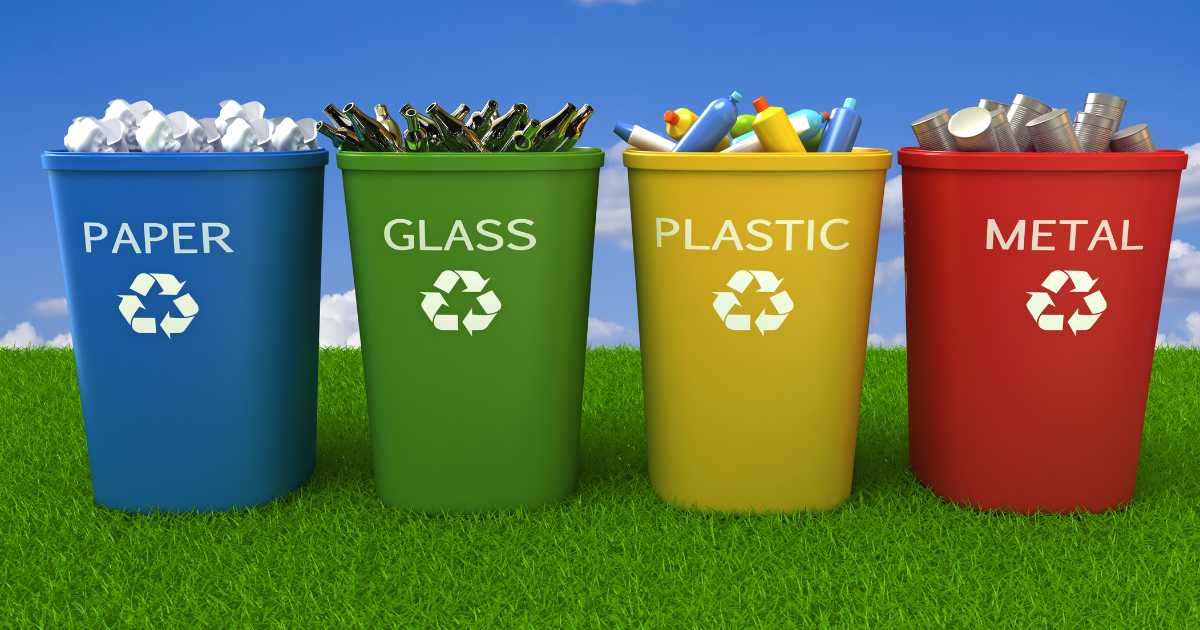Preventing cross-contamination in recycling bins is essential for ensuring recyclable materials are sorted and processed effectively. When non-recyclable items or incorrect materials are mixed with proper recyclables, it can contaminate the entire batch.
This contamination often leads to more waste ending up in landfills and increases the cost of recycling efforts. By taking small yet impactful steps to avoid cross-contamination, we can make recycling systems more efficient, reduce waste, and protect the environment.
Educating Your Community About Recycling
Proper recycling starts with awareness. Many people unknowingly place the wrong items in recycling bins, such as greasy pizza boxes, plastic bags, or non-recyclable materials. To combat this, education is key. Communities can organize workshops, distribute easy-to-read guides, and create online resources that explain local recycling rules.
Visual aids like posters or infographics placed near recycling bins are particularly effective. When people have access to clear information, they are more likely to follow recycling guidelines, improving the overall quality of recyclables collected.
Clear and User-Friendly Recycling Bin Labels
One of the simplest ways to reduce cross-contamination is by labeling recycling bins clearly and effectively. Each bin should have large, color-coded labels with pictures and text showing what items belong in it. For example, a bin for plastics might display images of water bottles and milk jugs, while a bin for paper could feature newspapers and cardboard.
Clear signage reduces confusion and ensures that everyone—from kids to adults—knows how to recycle correctly. Simple, visual instructions can dramatically increase participation and accuracy.
For instance, clear instructions about what not to put in a dumpster rental can also prevent contamination.

Making Recycling Easier with Single-Stream Systems
For many communities, single-stream recycling offers a convenient solution. Instead of requiring separate bins for each type of material, single-stream recycling allows all recyclables—like paper, plastic, metal, and glass—to be placed in a single bin.
This eliminates the guesswork for users, significantly reducing the risk of contamination from misplaced items. By simplifying the process, single-stream systems encourage more people to participate in recycling programs. However, these systems also rely heavily on advanced sorting facilities, making it important to ensure that collected materials are processed properly after collection.
Public Awareness Campaigns: Inspiring Action in the Community
Imagine a lively campaign that energizes the community about recycling! By using various platforms like TV, newspapers, and social media channels such as Facebook, Instagram, and Twitter, we can amplify the importance of recycling to a wide audience. These campaigns don’t have to be dry or formal; let’s make them interactive and fun!
Host online challenges where participants share creative recycling tips, such as reducing waste at home or learning how to manage waste in your community. Include contests, such as “Best Recycling Habits,” and reward winners with eco-friendly prizes. Integrating recycling themes into community events—like fairs, school functions, or even local festivals—can also draw attention to the cause.
Picture recycling-themed games for kids or booths demonstrating how recycled materials are transformed into new products. This not only keeps the message fresh but also reinforces the idea that recycling is both impactful and enjoyable.
Collaborating for Accurate Sorting
Accuracy in sorting is vital for successful recycling. Learn more about best practices for waste management and dumpster rules to refine systems. Together, we can refine systems for separating materials, from curbside pickup to large-scale processing centers.
Hosting training sessions or workshops for volunteers and staff at recycling facilities can increase awareness of proper sorting techniques. Additionally, inviting community members to tour recycling centers can help them understand the “why” behind the rules.
Think of it as building a partnership between residents and professionals—a shared mission to reduce waste and maximize the potential of recyclable materials. This teamwork creates a ripple effect, enhancing the entire recycling process from collection to repurposing.
Partnering with Local Businesses
Local businesses are a powerful ally in the recycling movement. Partner with nearby grocery stores, cafes, and retail shops to set up recycling stations for items like batteries, electronics, or plastic bags. Encourage businesses to display posters and signage about proper recycling practices in visible areas, such as checkout counters or entrances.
They can also promote eco-friendly initiatives by offering incentives, like discounts for customers who bring their reusable bags or participate in recycling programs. Another creative idea is collaborating with businesses for “Recycling Drive Days.” For example, a coffee shop could offer a free drink for every 10 cans or bottles brought in for recycling.
This type of engagement boosts community involvement while strengthening ties between businesses and local residents.

Keeping Recycling Guidelines Fresh and Clear
Recycling rules aren’t static—they evolve with advances in technology and changes in materials. Keeping these guidelines updated is critical to prevent confusion. Regularly distribute updates via newsletters, social media posts, or even community workshops.
Create easy-to-read charts or infographics that clearly outline what can and cannot be recycled. Consider adding a QR code to bins or signs that link directly to detailed local guidelines online. By maintaining clear and accessible rules, we ensure that everyone—from kids to seniors—stays informed and empowered to recycle effectively.
Let’s Brighten Up Recycling!
Imagine colorful bins in every shade of the rainbow, transforming recycling into a fun and engaging activity! Each color stands for a specific type of recyclable—blue for paper, green for glass, and so on. This system makes it super clear where each item belongs, turning waste sorting into a simple and almost playful matching game.
With these vibrant bins, recycling becomes less of a chore and more of a cheerful habit, making it easier for everyone to contribute to a cleaner, greener world.
Simplify Disposal for Non-Recyclables
What about the items we can’t recycle? Let’s make it just as easy to handle those! Placing designated trash bins right next to recycling stations ensures there’s always a convenient spot for non-recyclables.
This thoughtful setup encourages proper waste disposal, keeping our recycling clean and tidy. By making it effortless to separate non-recyclables, we help everyone stay on track and do their part with ease.
Frequently Asked Questions
What items are most commonly mistaken as recyclable but aren’t?
Some of the most common offenders include:
- Plastic straws and utensils
- Styrofoam (e.g., takeout containers)
- Used napkins, paper towels, and tissues
- Food-soiled materials like greasy pizza boxes
- Non-recyclable plastics labeled with certain numbers (e.g., #6 plastics)
Always check your local recycling guidelines to avoid these mix-ups.
Can I recycle broken glass?
No, broken glass isn’t typically accepted in curbside recycling bins because it can be hazardous to workers and may contaminate other recyclables. Instead, take it to a local recycling center that accepts glass or check with your municipality for guidance.
What should I do with small electronics like headphones or chargers?
Small electronics are considered e-waste and shouldn’t go in regular recycling bins. Many electronic stores or e-waste collection centers accept these items for proper recycling.
How do I handle aerosol cans?
Empty aerosol cans can often be recycled with metals, but partially full cans may be considered hazardous waste. Check with your local recycling program to confirm their specific rules for aerosol cans.
Are biodegradable or compostable plastics recyclable?
No, biodegradable or compostable plastics aren’t suitable for regular recycling bins. These materials break down differently and should be disposed of through composting facilities if available.
Can shredded paper be recycled?
Yes, but it requires special handling. Shredded paper should be bagged in a paper bag and labeled “shredded paper” before placing it in the recycling bin. Some programs require it to be taken directly to recycling facilities.
What about recycling lids and caps?
Plastic bottle caps can usually be recycled, but they should be screwed back onto the bottle after rinsing. Separate lids from glass jars unless your local program specifies otherwise.
Why can’t food waste go in recycling bins?
Food waste contaminates recyclables and makes processing difficult. Instead, compost food scraps if you have access to a composting program.
How can I encourage others to recycle properly?
Lead by example! Share tips, provide clear guidelines, and support educational programs in your community. Hosting local events or workshops can also help spread awareness.
Conclusion:
Preventing cross-contamination in recycling bins is a vital step in creating a more sustainable and effective waste management system. With clear communication, accessible recycling options, and community-driven initiatives, we can make a significant difference in reducing waste and conserving resources.
Every individual’s effort counts. Whether it’s rinsing a container, sorting materials correctly, or encouraging others to recycle, these small actions add up to meaningful change. Let’s work together to build a cleaner, greener future—one responsible choice at a time. Visit our blog for more tips and strategies to become a recycling champion and make a lasting impact on our environment.
